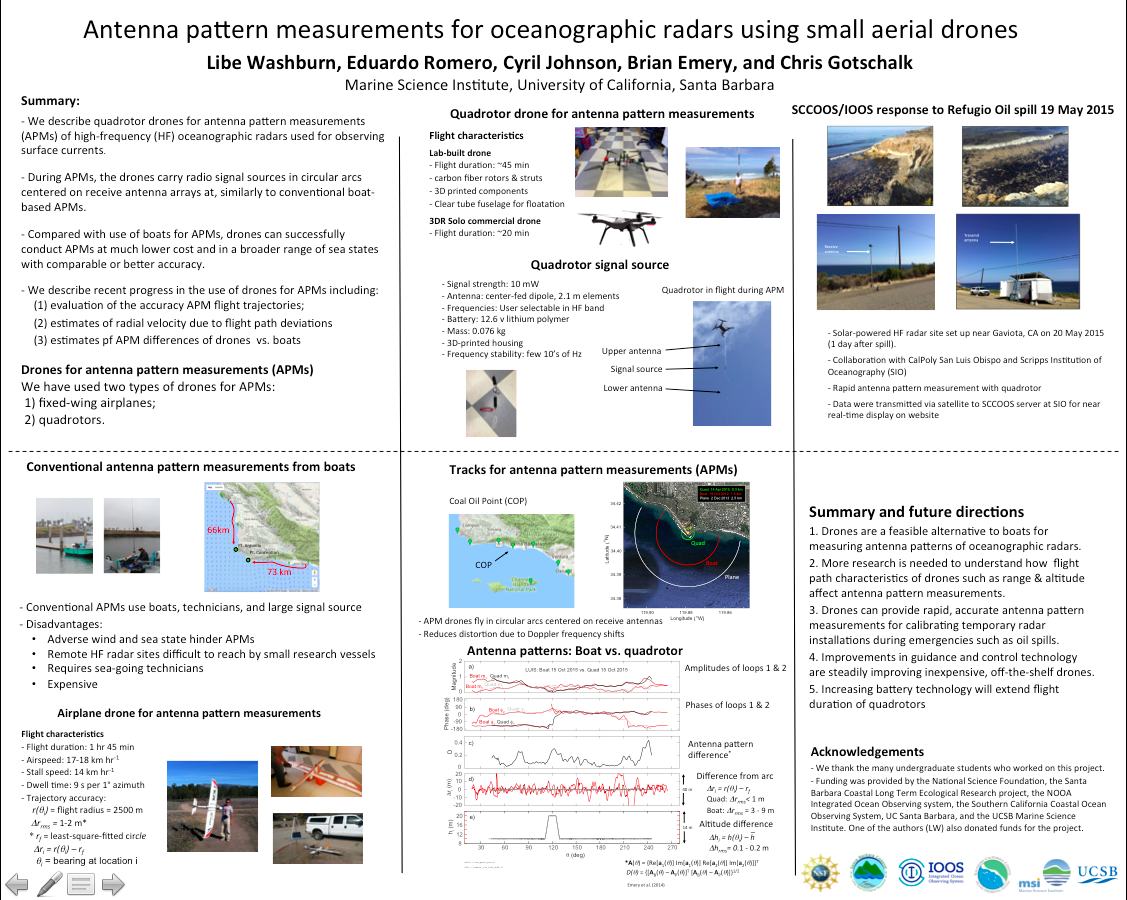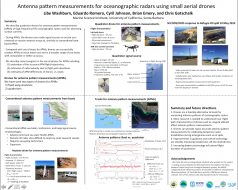A new method is described employing small drone aircraft for antenna pattern measurements (APMs) of high frequency (HF) oceanographic radars used for observing ocean surface currents. Previous studies have shown that accurate surface current measurements using HF radar require APMs. In the absence of APMs so-called "ideal" antenna patterns are assumed and these can differ substantially from measured patterns. Typically APMs are obtained using small research vessels carrying radio signal sources or transponders in circular arcs around individual radar sites. Circular arcs are necessary to avoid distortion of the transmitted calibration signals caused by radial movements of the signal source. This procedure is expensive because it requires sea-going technicians, a vessel, and other equipment necessary to support small boat operations. Furthermore adverse sea conditions and obstacles in the water can limit the ability of small vessels to conduct APMs. In contrast, it is shown that drone aircraft can successfully conduct APMs at much lower cost and in a broader range of sea states with comparable accuracy. Drone-based patterns can extend farther shoreward since they are not affected by the surf zone and thereby expand the range of bearings over which APMs are determined. This simplified process for obtaining APMs can lead to more frequent calibrations and improved surface current measurements.
1 January 2016


